A Guide to the Best Things To Do and See in Metz
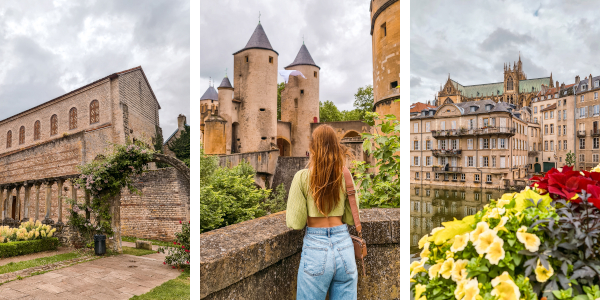
Metz is a beautiful city nestled in the heart of the Lorraine region in northeastern France, located on the banks of the Moselle River. With a rich history dating back to Roman times, Metz offers a wealth of historical attractions as well as breathtaking scenery. This guide will take you on a journey through the best things to do and see in Metz, from exploring the charming old town to taking a leisurely cruise along the Moselle River.
We visited Metz on a day trip from Nancy, which is only a 45-minute drive or a 40-minute train ride from Metz. We fell in love with the historical architecture of Nancy, and would highly recommend visiting this charming city. Read more in our complete sightseeing guide of Nancy.
History of Metz
The history of Metz goes back over 2000 years. Before Metz was conquered by the Romans in 52 BC, it was a town of the Celts. In 843, Metz became the capital of the short-lived Kingdom of Lotharingia and was ultimately integrated into the Holy Roman Empire with semi-independent status. From the 12th until the 15th century, Metz was a republic. After the 1870 Franco-Prussian War, Metz became part of the German Empire even though the people in Metz largely spoke French. In the aftermath of World War I, Metz was returned to France. During World War II, Metz was once again annexed by Germany and after the war the city reverted one more time to Frane. Today, it is a vibrant city with a rich cultural heritage, attracting visitors from all over the world who come to enjoy its museums, cathedrals, and charming streets. Despite its long and complex history, Metz has maintained a unique and distinct identity, with a rich mix of influences from various cultures and time periods.
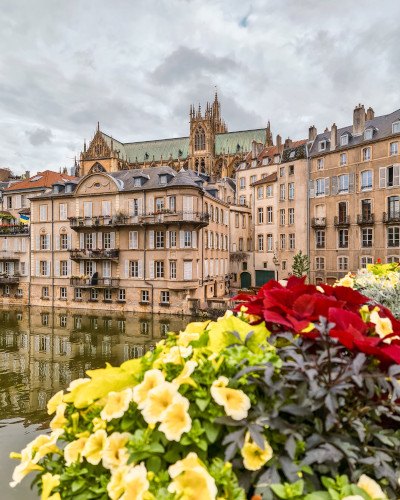
View of the Moselle river in Metz and the cathedral in the background
Gare de Metz-Ville
The train station of Metz, also known as the Gare de Metz-Ville, is a historic building built between 1905 and 1908, during the time when Metz was part of the German Empire. The station was commissioned by Kaiser Wilhelm II and designed by the German architect Jürgen Kröger. The train station is an impressive example of German neo-Romanesque architecture. The building combines various design elements to represent the historical significance of the Holy Roman emperors. The departure hall area has a church-like shape, complete with a clock tower that rises 40m in height and is said to have been designed by Kaiser Wilhelm himself. In contrast, the arrivals hall and restaurant area reflect the grandeur of an imperial palace. The station’s design aims to symbolize the religious and temporal powers of the Holy Roman emperors, with the statue of the Knight Roland at the angle of the clock tower representing imperial protection over Metz. As you enter the grand hallway, you’ll be greeted by a stunning stained glass window depicting the Emperor Charlemagne sitting on his throne, adding to the station’s rich historical significance.
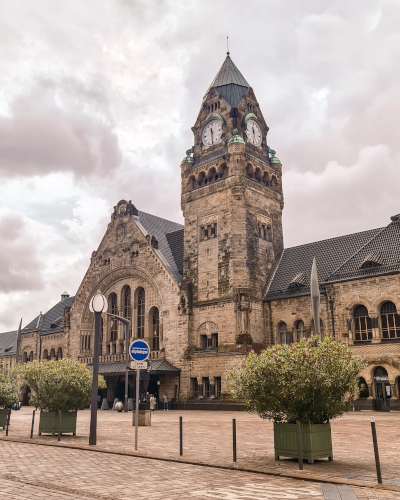
Gare de Metz-Ville
Porte des Allemands
The Porte des Allemands is a historic gate located in Metz, France, that dates back to the 13th century. The gate was built as part of the city’s fortifications and served as one of the main entrances to the city. On the side of the city, there are two small towers that were built in 1230. These towers are connected by a bridge over the Seille river with larger ones built in 1445. In 1480, a gallery was added on the bridge. The gate is surrounded by lush greenery, making it a beautiful spot for a photo. During the opening hours of the gate, you can walk through the towers and cross the bridge.
Opening hours of Porte des Allemands
Tuesday - Friday from 14:00 until 17:00
Saturday & Sunday from 14:00 until 18:00
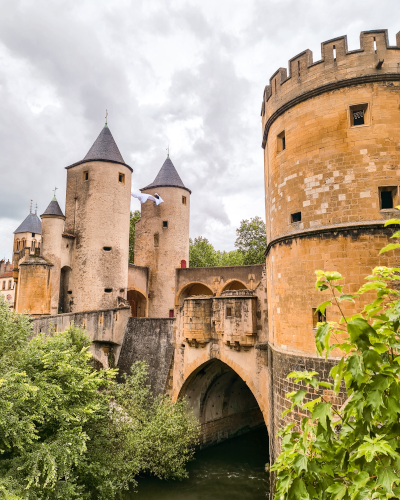
Porte des Allemands
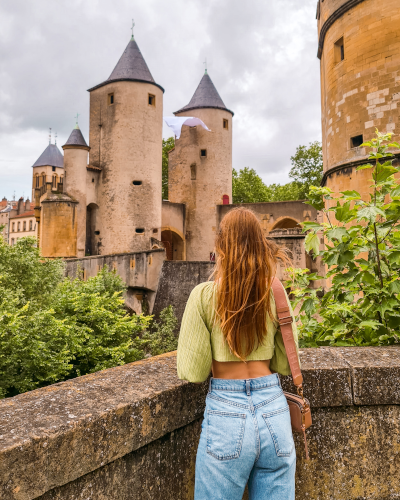
Porte des Allemands is also a pretty photo spot
Place Saint-Louis
Place Saint-Louis is a medieval square located in the heart of the city dating back to the 13th century. The square was named after King Louis IX, who was the King of France at that time. During the Middle Ages, the square served as an important center of commerce. The square was then the largest market square in Metz. Nowadays, the square is home to a lot of restaurants with outdoor seating areas. We bet it’s a vibrant square when the weather allows for drinks or a bite outside. In December, there’s a yearly Christmas Market at Place Saint-Louis
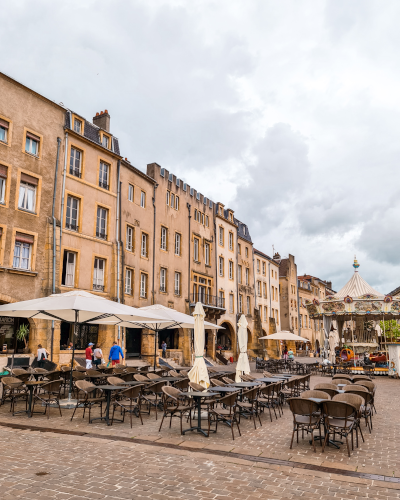
Place Saint-Louis
Basilica of Saint-Pierre-aux-Nonnains
The Basilica of Saint-Pierre-aux-Nonnains is believed to be one of the oldest churches in the world still standing, with parts of the building dating back to the 4th century. The church was originally built as a Roman gymnasium and was later converted into a Christian church during the 7th century. Over the centuries, the church underwent several renovations and modifications, with new features and elements being added to its structure. From the 16th century, the church was used as a military warehouse until 1946. Drastic restorations took place from 1975, reconstructing the church building to its Ottoman shape while retaining the Roman and Gothic elements. The church now serves as a cultural center, with a range of exhibitions, concerts, and other events taking place throughout the year.
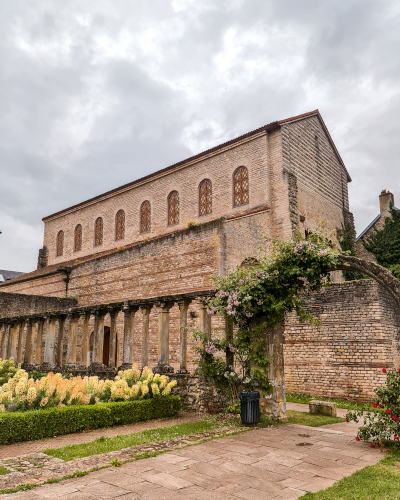
Basilica of Saint-Pierre-aux-Nonnains
Temple Neuf
Temple Neuf is a church situated on the banks of the Moselle River, near the Pont des Morts. The church was built in 1901 when Metz was part of the German Empire. Many buildings in Metz were renovated or replaced during this period to show the superiority of the German Empire. The Temple Neuf is a good example of this. The location of Temple Neuf is idyllic as the church is surrounded by greenery and the Moselle river, making it a great photo spot. The best view of Temple Neuf is from the nearby bridge Moyen-Pont and Quai Paul Vautrin.
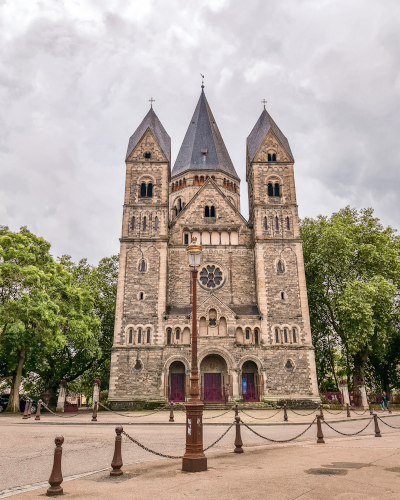
The entrance of Temple Neuf
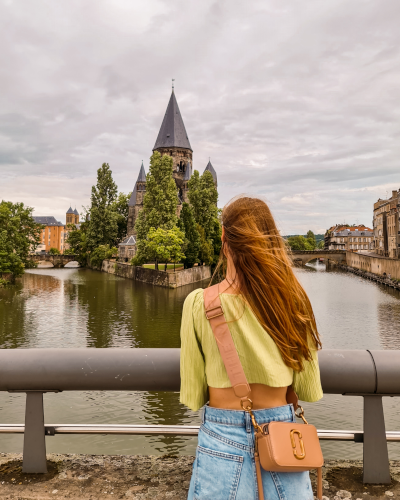
Temple Neuf from Moyen-Pont
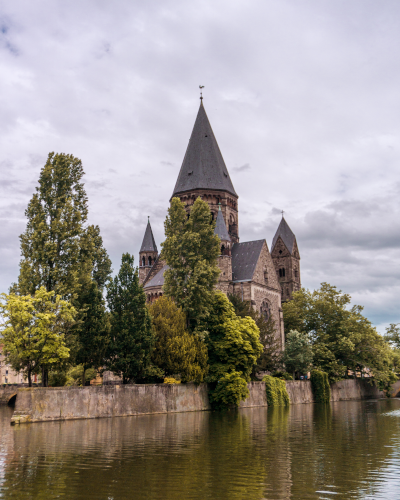
Temple Neuf from Quai Paul Vautrin
Opéra-Théâtre de Metz
The Opéra-Théâtre de Metz was built in the mid-18th century. The theater was commissioned by Duke de Belle-Isle and designed by architect Jacques Oger in Tuscany-influenced neo-Classical style. The Duke de Belle-Isle called it the most beautiful opera-theater in France. The theater’s original purpose was to provide entertainment for the city’s wealthy residents, who would attend plays, operas, and ballets performed by some of the finest artists of the time. The theater originally had 1382 seats, but after restorations in 1981 and 1982, the seats in the theater had been reduced to 750. Nowadays, the theater features around sixty performances a year. Not so fun fact: during the French Revolution, the guillotine for the executions was erected on the square in front of the theater, Place de la Comédie.
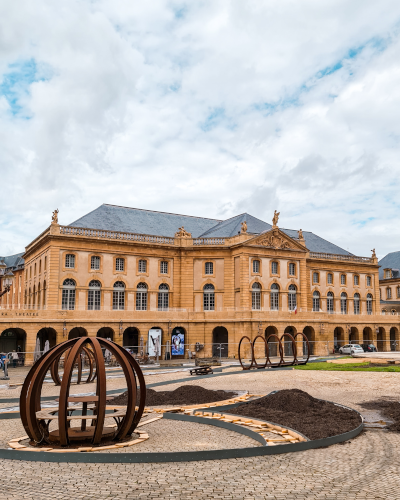
Opéra-Théâtre de Metz
Cathédrale de Metz
The cathedral was built on an ancient site from the 5th century dedicated to Saint Stephen. In the 10th century, a cathedral in Ottonian architecture was built on this site. The reconstruction of the cathedral in Gothic style started in the 13th century. Because the reconstructions took centuries, the cathedral’s design reflects the evolution of Gothic architecture over these centuries, with elements of both the High Gothic and Rayonnant Gothic styles present in its design. Despite the reconstructions, the cathedral was in a deplorable state in the early 19th century. When Metz was annexed to the German Empire after the Franco-Prussian War in 1871, Emperor Wilhelm I was particularly interested in rebuilding Cathédrale de Metz to win the support of the population. Both the exterior and interior of the cathedral were restored and reconstructed by German architects. At the end of World War I, Metz was returned to France.
The Metz Cathedral boasts a number of impressive features, including its towering nave, ornate stained glass windows, and intricate stone carvings. The cathedral’s stained glass windows are particularly renowned, with some of the windows dating back to the 13th century and others created in more recent times by famous artists such as Marc Chagall.
Opening hours of Cathédrale de Metz
Daily from 08:00 until 18:00
There’s no entrance fee.
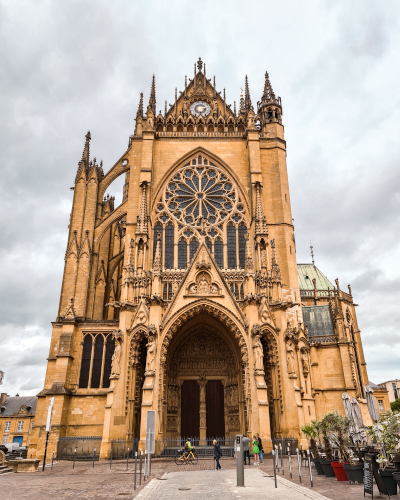
Cathédrale de Metz
Boat tour on the Moselle river
Taking a bout tour on the Moselle river is a great way to explore Metz from a different perspective and see some of its most beautiful sights. The Moselle River runs through the heart of Metz, offering stunning views of the city’s historic architecture, lush greenery, and vibrant waterfront. There are a few tour companies that offer sightseeing cruises in Metz, with options ranging from 1-hour trips to longer excursions, including food and drinks. Unfortunately, we didn’t do a boat tour in Metz as the weather wasn’t cooperating at all, so we can’t recommend a tour company. For more information about boat tours and tour companies, check out the website of the tourist office in Metz.
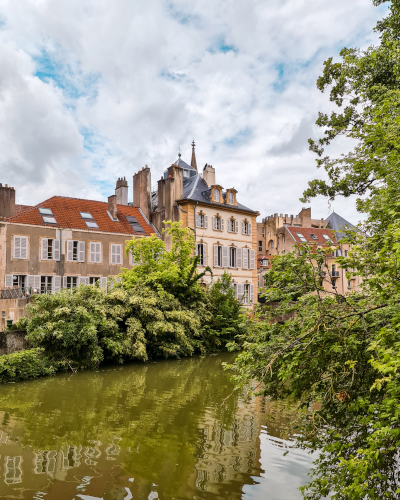
The Moselle river in Metz
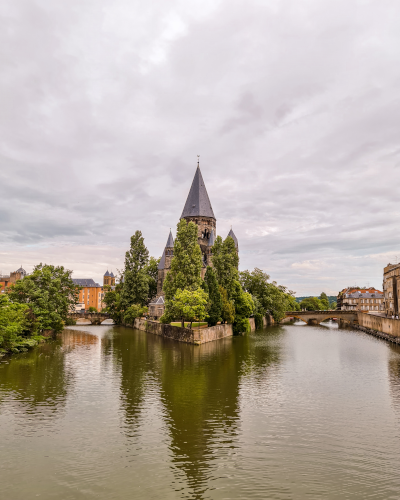
Temple Neuf and the Moselle river in Metz
More things to do in Metz
If you have more time to spend in Metz than we had, consider the museums Centre Pompidou-Metz, Musée de la Cour d’Or and Jardin Botanique de Metz.
Centre Pompidou-Metz is a modern and contemporary art museum and is a branch of Pompidou arts center in Paris, featuring semi-permanent and temporary exhibitions from the large collection of the French National Museum of Modern Art. The museum was designed by the Japanese architect Shigeru Ban and built between 2006-2010. The building itself is an architectural masterpiece, with a unique roof design that resembles a Chinese hat. If you’re into modern arts, this museum is a must-visit.
Opening hours of Centre Pompidou-Metz
November - March: Wednesday until Monday from 10:00 until 18:00
April - October: Monday, Wednesday & Thursday from 10:00 until 18:00 & Friday until Sunday from 10:00 until 19:00
Closed on Tuesdays and May 1st.
An entrance ticket is €14.
Jardin Botanique de Metz is a botanical garden that was established in 1866 and covers more than 4 hectares of land. The garden features a wide variety of plants and flowers, including greenhouses with around 4500 plants, such as orchids, cacti and palms, as well as a butterfly house and a bird aviary. Visitors can take a leisurely stroll through the garden, enjoying the beauty of nature and the peaceful atmosphere.
Opening hours of Jardin Botanique de Metz
Daily from 08:00 until dark
The greenhouses are open from 09:00 until 16:00 on weekdays and from 09:00 until 12:00 on weekends and public holidays.
There’s no entrance fee.
Musée de la Cour d’Or is a history museum that houses an extensive collection of archaeological and historical artifacts from the Roman era as well as medieval and renaissance art works. Beyond the archaeological and artwork pieces, the museum also showcases architectural pieces. There is a Roman spa complex, a Gothic granary, and even entire medieval rooms with painted wooden ceilings, facades and more. The museum offers a historical tour of reconstructed rooms, especially from medieval Metz. to the present day.
Opening hours of Musée de la Cour d’Or
Wednesday until Monday from 10:00 until 12:45 and from 14:00 until 18:00
Closed on Tuesdays, January 1st, Good Friday, May 1st, July 14th, November 1st and 11th and December 24th, 25th, 26th and 31st.
There’s no entrance fee.
Whether you’re looking to immerse yourself in the city’s fascinating history, explore its natural beauty, or simply relax and enjoy the local culture, Metz is sure to provide a memorable experience. So why not start planning your trip to Metz today? With so much to see and do, you’re sure to fall in love with this charming city.
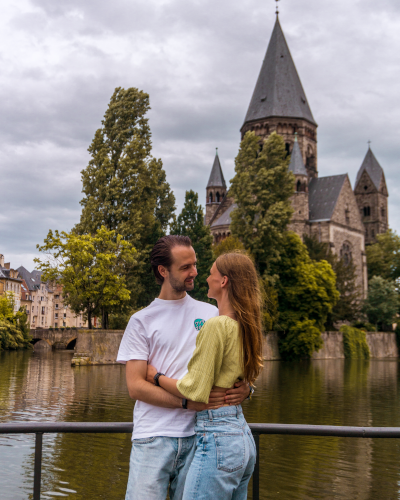
Have you been to Metz or is it still on your travel bucket list? Let us know in the comments below!
Be sure to check out:
- our online prints store KIPAVISTA.com
- our daily life updates on Instagram
- our YouTube Channel
- our TikTok
More France
3-Day Road Trip along the Coast of Normandy
3-Day Road Trip in the Seine Valley

